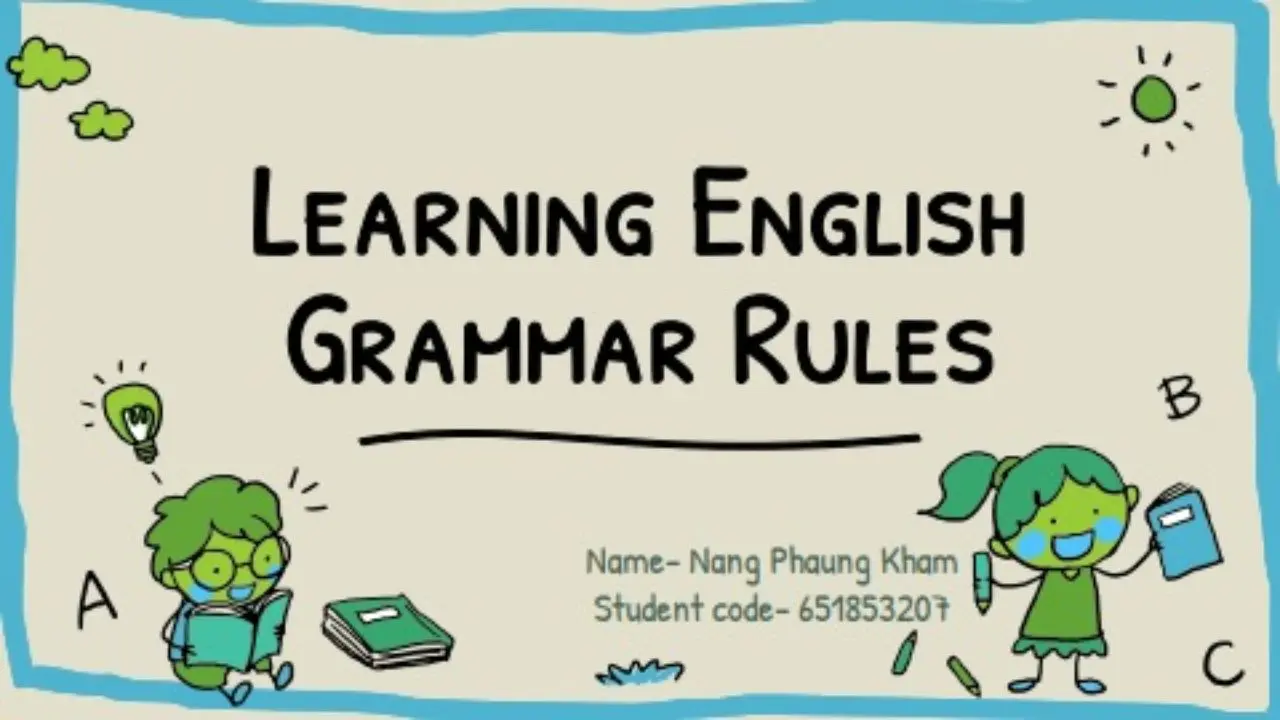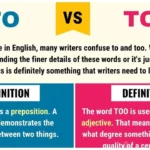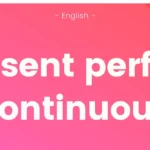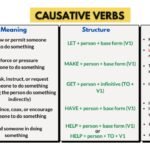English Grammar Rules With Verb, Tense, Voice And Punctuation:
Verb
What Is Verb?
Definition: A verb is an action or position of a subject.
Example: He plays cricket. / I am writing a letter
On the basis of its uses verb is divided into two forms:
- Principal Verb / Main Verb / Leading Verb / Doing Verb / Action Verb
- Auxiliary Verb / Helping Verb / Assistance Verb / Sub-ordinate Verb
1.Principle Verb: A verb that does the real action sentence is called principle verb.
Examples:
- She writes novels.
- They played soccer yesterday.
- He eats breakfast at 7 AM.
- The cat chased the mouse.
- She reads a book every night.
- We visited the museum last weekend.
- He bought a new car.
- They run in the park every morning.
- She sings beautifully.
- He fixed the broken chair.
Example: I am playing cricket. (playing – P.V)
- Note (i): (P.V = Principal Verb & A.V = Auxiliary Verb)
- Note (ii): इनकी संख्या असीमित होती हैं|
- Note (iii): ध्यान रहे कि यदि किसी वाक्य में किसी भी तरह का एकमात्र Verb लगा रहे तो उसे Principle Verb के ही दायरे में रखा जाता हैं|
Example: I am a honest. (am-A.V, honest-P.V) / I have a new car. (have-P.V)
2. Auxiliary Verb: A verb that come as the assistance of principle verb in sentence is called auxiliary verb.
Examples:
She is writing a letter.
- Auxiliary Verb: is
- Principal Verb: writing
They have completed their homework.
- Auxiliary Verb: have
- Principal Verb: completed
He was running when it started to rain.
- Auxiliary Verb: was
- Principal Verb: running
Example: I am writing a letter. (am-A.V, writing-P.V) / I have bought a car.
- Note (i): ध्यान रहे कि किसी वाक्य में बिना Principle Verb का Auxiliary Verb नहीं आता हैं|
- Note (ii): इनकी संख्या मात्रा 24 होती हैं|
- Note (iii): Auxiliary Verb के 24 सदस्यों को मूलत: चार भागों में विभक्त (बाटकर) कर पड़ा जा सकता है|
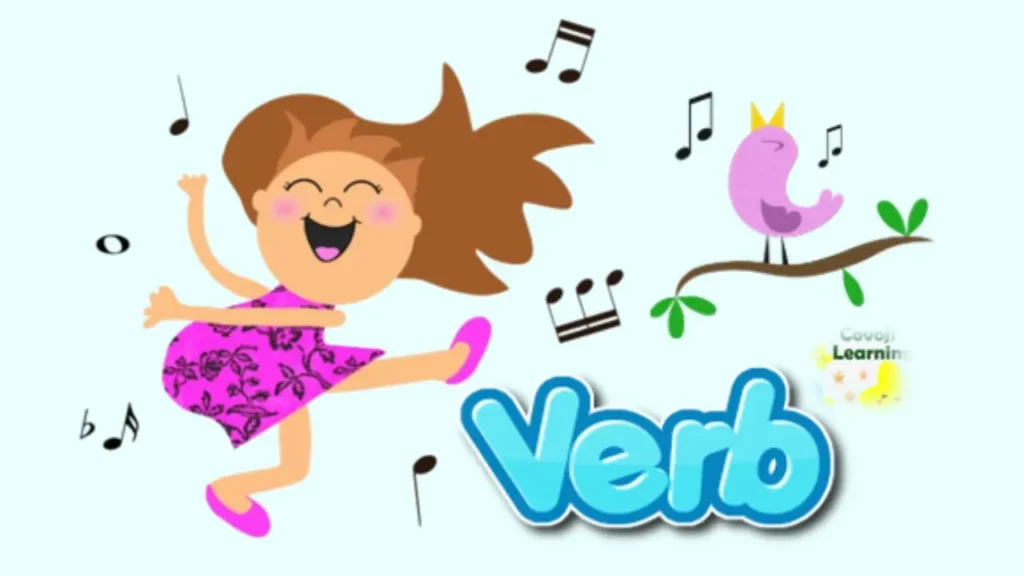
Be Auxiliary Verb
- Do Auxiliary Verb
- Have Auxiliary Verb
- Model Auxiliary Verb
| Auxiliary Verb | V1 | V2 | V3 | V4 | V5 | No. of A.V |
|---|---|---|---|---|---|---|
| Be (A.V) | am / are / be | was / were | been | being | is | 05 |
| Do (A.V) | do | did | done | doing | does | 03 |
| Have (A.V) | have | had | had | having | has | 03 |
| | | | | | | Total – 11 |
| Models (A.V) | can, could, may, might, shall, should, will, use to, out to, dare not, need out, must |
| | Total – 13 |
Tense
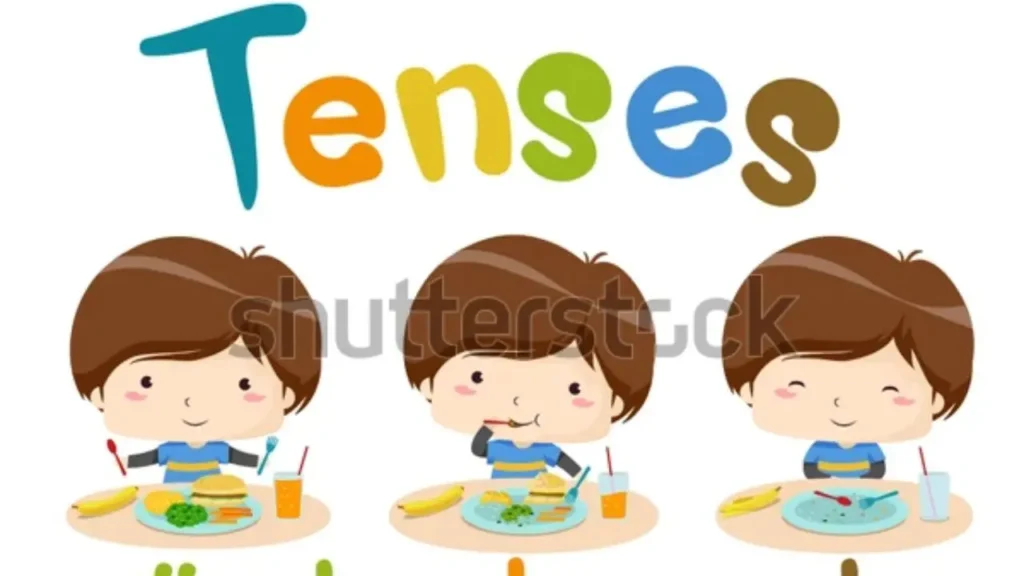
Tense & Time
Definition: The change in verb according to time is called time and tense.
There are three types of time:
- Present Time – The present tense is a grammatical tense used to describe actions, events, or states that are currently happening, habitual, or generally true. It is used to convey:
- Past Time – The past tense in English is used to describe actions or states that occurred before the present moment. It includes four main forms:
- Future Time – The future tense in English is used to describe actions or states that will occur after the present moment. It includes several forms to express different aspects of future time:
There are four types of tenses uses: Indefinite Tense Continuous Tense Perfect Tense Perfect Continuous
1. Tense with Present Time
There are 4 Type Of Present Tense
- Present Indefinite Tense – describes habitual actions, general truths, and permanent situations. It uses the base form of the verb, with -s or -es added for third person singular subjects (he, she, it).
- Present Continuous Tense – Describes actions that are currently ongoing or happening at the moment of speaking. It is formed with am/is/are + verb + -ing
- Present Perfect Tense – Present Perfect Tense Describes actions that have been completed at some unspecified time before now, with relevance to the present. It is formed with has/have + past participle (V3).
- Present Perfect Continuous Tense – Present Perfect Continuous Tense Describes actions that started in the past and are still continuing or were recently completed, emphasizing the duration. It is formed with has/have + been + verb + -ing.
Present Indefinite Tense
- Positive – S + V1/V5 + O
- Negative – S + Do not/Does not +V1 + O
- Interrogative – Do/does + S + V1 + O?
- Negative Interrogative – Do/Does + S + not + V1 + O?
Examples:
- She writes letters every day.
- They play soccer on weekends.
- He reads books in the evening.
Present Continuous Tense
S + is/am/are + V4 + O
Examples:
- She is writing a letter.
- They are playing soccer.
- He is reading a book.
Present Perfect Tense
- Stu: S + has/have + V3 + o
Examples:
- She has written five letters.
- They have played soccer several times this month.
- He has read that book already.
Present Perfect Continuous Tense
Stu: S + has/have + been + V4 + O + for/since + time
Examples:
- She has been writing letters for two hours.
- They have been playing soccer since 3 PM.
- He has been reading the book since last week.
2. Tenses with Past Time
There Are 4 Type Of Past Tense
- Past Indefinite Tense – Describes actions that were completed at a specific time in the past. It is formed with past form of the verb (V2).
- Past Continuous Tense – Describes actions that were ongoing at a particular time in the past. It is formed with was/were + verb + -ing.
- Past Perfect Tense – Describes actions that were completed before another action or time in the past. It is formed with had + past participle (V3).
- Past Perfect Continuous Tense – Describes actions that were ongoing up until a specific point in the past, emphasizing the duration. It is formed with had been + verb + -ing.
Past Indefinite Tense
- Positive – S + V2 + O
- Interrogative – Did + S + V1 + O
- Negative Interrogative – Did + S + not + V1 + O?
Examples:
- She wrote a letter yesterday.
- They played soccer last weekend.
- He read the book last night.
Past Continuous Tense
St: S + was/were + V4 + O
Examples:
- She was writing a letter when I called.
- They were playing soccer all afternoon.
- He was reading the book when the power went out.
Past Perfect Tense
Structure: S + had + V3 + O
Examples:
- he had written the letter before the meeting started.
- They had played soccer before it started raining.
- He had read the book before the discussion began.
Past Perfect Continuous Tense
St: S + had been + V4 + O + for/since + time
Examples:
- She had been writing the letter for an hour before the meeting.
- They had been playing soccer for two hours before it started raining.
- He had been reading the book for a week before finishing it.
3. Tenses with Future Time
There are 4 type of Future Tense
- Future Indefinite Tense – Describes actions that will happen at a specific time in the future. It is formed with will/shall + base form of the verb (V1).
- Future Continuous Tense – Describes actions that will be ongoing at a specific time in the future. It is formed with will be + verb + -ing.
- Future Perfect Tense – Describes actions that will be completed before a specific point in the future. It is formed with will have + past participle (V3).
- Future Perfect Continuous Tense – Describes actions that will be ongoing up until a specific point in the future, emphasizing the duration. It is formed with will have been + verb + -ing.
Future Indefinite Tense
Stu: S + shall/will + V1 + O
Examples:
- She will write a letter tomorrow.
- They will play soccer next weekend.
- He will read the book soon.
Future Continuous Tense
Stu: S + shall/will + be + V4 + O
Examples:
- She will be writing a letter at this time tomorrow.
- They will be playing soccer next weekend.
- He will be reading the book later.
Future Perfect Tense
Stu: S + shall/will + have + V3 + O + by/before + time
Examples:
- She will have written the letter by tomorrow.
- They will have played soccer by the end of the month.
- He will have read the book by next week.
Future Perfect Continuous Tense
Stu: S + shall/will + have be + V4 + O + from + time
Examples:
- She will have been writing the letter for two hours by tomorrow.
- They will have been playing soccer for three hours by the end of the game.
- He will have been reading the book for a month by the time he finishes.
Voice

What Is Voice?
Definition: Voice is an art of making statement.
A statement can be make into two voices:
- Active Voice
- Passive Voice
Active Voice
Definition: An action in the dominance of subject is kept in active voice.
Example: Ram writes a letter.
Passive Voice
Definition: An action in the dominance of object is kept in passive voice.
Example: A letter is written by Ram.
Rule to change Active into Passive voice:
(i) Be(form) + V3 = Passive Voice
| V1 | V2 | V3 | V4 | V5 |
| Am/are/be | was/were | been | being | is |
Some Important Facts
- Facts: (i) The object of active sentence becomes subject in passive.
- Facts: (iii) Be (form) + V3 makes the structure of passive voice.
- Facts: (ii) Generally the subject of an active sentence becomes by + object in passive.
- Facts: (iv) In a passive structure, the ‘Be’ form usually comes in the same form as the main verb of the active sentence.
- Facts: (v) Be / Been / Being are not used consecutively.
Change Into Active To Passive Voice
[1.] Active – Mohan plays cricket. | Passive – Cricket is played by Mohan.
[2.] Active – Mohan is playing Cricket. | Passive – Cricket is being played by Mohan.
[3.] Active – Mohan has playing Cricket. | Passive – Cricket has being playing by Mohan.
[4.] Active – Mohan has been playing Cricket. | Passive – Be (form) का क्रमागत प्रयोग नहीं होता हैं|
[5.] Active – Mohan played Cricket. | Passive – Cricket been played by Mohan.
[6.] Active – Mohan was playing Cricket. | Passive – Cricket was being played by Mohan.
[7.] Active – Mohan has playing Cricket. | Passive – Cricket had playing cricket.
[8.] Active – Mohan had been playing Cricket. | Passive – Be (form) का क्रमागत प्रयोग नहीं होता है|
[9.] Active – Mohan will paly Cricket. | Passive – Cricket will be played by Mohan.
[10.] Active – Mohan will had playing Cricket. | Passive – Cricket will had being playing by Mohan.
Punctuation
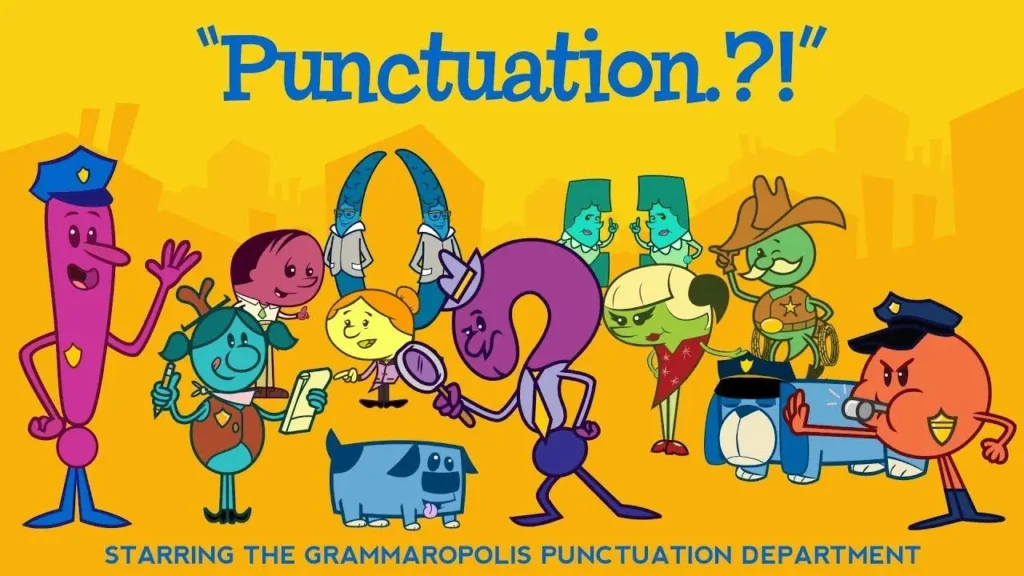
4. What Is Punctuation?
1.Period (.): Ends a sentence or indicates an abbreviation.
Example:
- She went to the store.
- I will call you later.
- The meeting is scheduled for 3 PM.
- He finished his homework.
- Dr. Smith is our new professor.
2. Comma (,): Separates items in a list, clauses, or adjectives; used after introductory phrases.
Example:
- I need to buy eggs, milk, bread, and cheese.
- After the movie, we went out for dinner.
- She wore a red, velvet dress to the party.
- Although it was raining, we decided to go hiking.
- My brother, who lives in New York, is visiting us next week.
3. Question Mark (?): Ends a direct question.
Example:
- What time does the meeting start?
- Are you coming to the party?
- How did you solve the problem?
- Where did I put my keys?
- Did you finish the report?
4. Exclamation Point (!): Expresses strong emotion or emphasis.
Example:
- Watch out for that car!
- I can’t believe we won the game!
- Congratulations on your promotion!
- That’s amazing!
- Help!
5. Colon (:): Introduces a list, a quote, or an explanation.
Example:
- She needs the following items: eggs, milk, and bread.
- He said: “The project is due next week.”
- The reason is simple: we need more time.
- These are my favorite colors: blue, green, and red.
- Remember to bring: sunscreen, a hat, and water.
6. Semicolon (;): Links closely related independent clauses or separates items in a complex list.
Example:
- I have a big test tomorrow; I can’t go out tonight.
- She loves playing the guitar; her sister, on the other hand, prefers the piano.
- The conference has attendees from New York, New York; Los Angeles, California; and Austin, Texas.
- He is a talented musician; his skills are truly impressive.
- We went to the park; however, it started raining shortly after we arrived.
7. Apostrophe (‘): Indicates possession or forms contractions.
Example:
- This is Sarah’s book.
- It’s going to rain today. (contraction of “it is”)
- The dog wagged its tail. (no apostrophe for possessive pronoun)
- The children’s toys were scattered everywhere.
- She can’t attend the meeting. (contraction of “cannot”)
8. Quotation Marks (” “): Enclose direct speech or quotations.
Example:
- “I will be there soon,” she said.
- “The quick brown fox jumps over the lazy dog,” is a famous pangram.
- He asked, “Are you coming to the party?”
- “To be or not to be,” that is the question.
- She replied, “I’ve already finished the report.”
9. Dash (—): Indicates a break or interruption in a sentence, or emphasizes additional i.
Example:
- She was going to the store—until it started raining.
- The meeting was postponed—again—due to technical issues.
- He finally finished the project—after working on it for months.
- The new policy—though controversial—was approved by the board.
- I have a lot to do today—grocery shopping, cleaning, and more.
10. Parentheses (()): Enclose additional information or clarifications.
Example:
- He finally answered (after taking five minutes to think).
- The restaurant (which is new in town) has great reviews.
- She bought several items (including a new phone and a laptop).
- My brother (who is studying abroad) is coming home for the holidays.
- The conference (held annually) is scheduled for next month.
11. Hyphen (-): Joins words or parts of words, often in compound adjectives.
Example:
- She is a well-known author.
- We need a high-quality camera for the project.
- They live in a four-bedroom house.
- The mother-in-law came to visit.
- It was a long-term investment.
12. Ellipsis (…): Indicates omitted text or a pause in thought.
Example:
- She wondered if he would come…
- “I’m not sure… maybe we should ask someone else.”
- The instructions were clear, but the end was missing…
- He couldn’t believe what he was hearing…
- “I thought we were going to…,” she said, trailing off.
Read Also:
